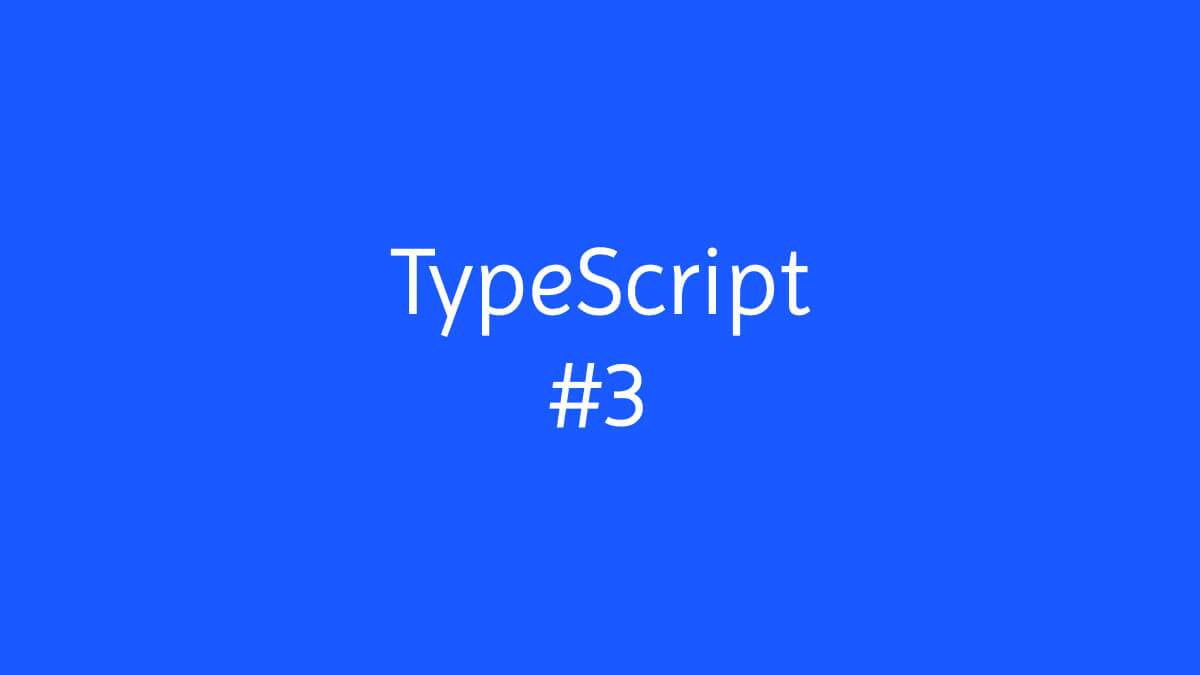この記事はTypeScriptを勉強していく中で、学んだことや疑問に思ったことを記録していくための記事です。
今回は、typeとinterfaceについてを学びました。
type
// typeの後に任意の名前(大文字から始まる)を付け型をつけることができる
type TypeName = {name: string,age:number};
// 使用方法
let obj :TypeName;
obj = {name: "sae", age:10};アロー関数
type Func = (num:number) => void;
const f:Func = (num) => {
console.log(num)
}
f(100);interface
// interfaceの後に任意の名前をつけることができる
interface User {
name: string;
onClick: () => void
}
// 使用方法
const hogehoge: User = {
name: "hogehoge",
onClick: () => console.log("hoooooo")
};optionalにする
// ?を付けることでオプショナルになる
interface User {
name: string;
onClick?: () => void
}
const hogehoge: User = {
name: "hogehoge",
};extendsする
interface User {
name: string;
onClick: () => void
}
interface UserAndFriends extends User{
friends: string[]
}
const hoge:UserAndFriends = {
name: "sae",
onClick: () => console.log("yaaaaa"),
friends:["taro","hanako"]
}関数
interface Message {
(message: string) : void
}
const hello:Message = (message) => {
console.log(message)
}typeとinterfaceの違い
Declaration merging
interfaceの場合、型名が重複するとそれらはマージされる。
interface User {
name: string;
onClick: () => void
}
interface User {
age: number;
}
// Error
// Property 'age' is missing in type '{ name: string; onClick: () => void; }' but required in type 'User'
// ageが足りないと言っている...
const hoge:User = {
name: "sae",
onClick : () => console.log("Yaaaa!!!!!"),
}
// OK
const hoge:User = {
name: "sae",
onClick : () => console.log("Yaaaa!!!!!"),
age:10
}
typeの場合はエラーがでて、マージされない
type User= {
name: string;
onClick: () => void
}
// Duplicate identifier 'User'.
type User ={
age: number;
}定義できる型のちがい
プリミティブ型
// OK
type User= string;
// NG
interface Age {string}タプル型
// OK
type User= [name:string,name:string];
// NG
interface User {[name:string,name:string]}ユニオン型
// OK
type User= string | undefined;
// NG
interface User {string | undefined};以下のようにもできる
interface A {
name : string
}
interface B {
age: number
}
type Hoge = A & B;
const hoge:Hoge = {name:"sae",age:10};objectの統合
interfaceの場合はextendsを使用する
interface A {
name: string;
age: number;
}
interface B {
foo: string
}
interface Hoge extends A,B {};
const hoge:Hoge = {
name: "sae",
age:20,
foo: "foo"
}typeの場合は&を使用する
type A = {
name: string;
age: number;
}
type B = {
foo: string
}
type Hoge = A & B;
const hoge:Hoge = {
name: "sae",
age:20,
foo: "foo"
}参考記事

Tidy TypeScript: Prefer type aliases over interfaces
This is the second article in a series of articles where I want to highlight ways on how to keep your TypeScript code neat and tidy. By nature, this series is h...
Page not found - LogRocket Blog
Resources to Help Product Teams Ship Amazing Digital Experiences

Interfaces v type aliases | Learn TypeScript
Whether to use TypeScript type aliases or interfaces in different use cases



コメント